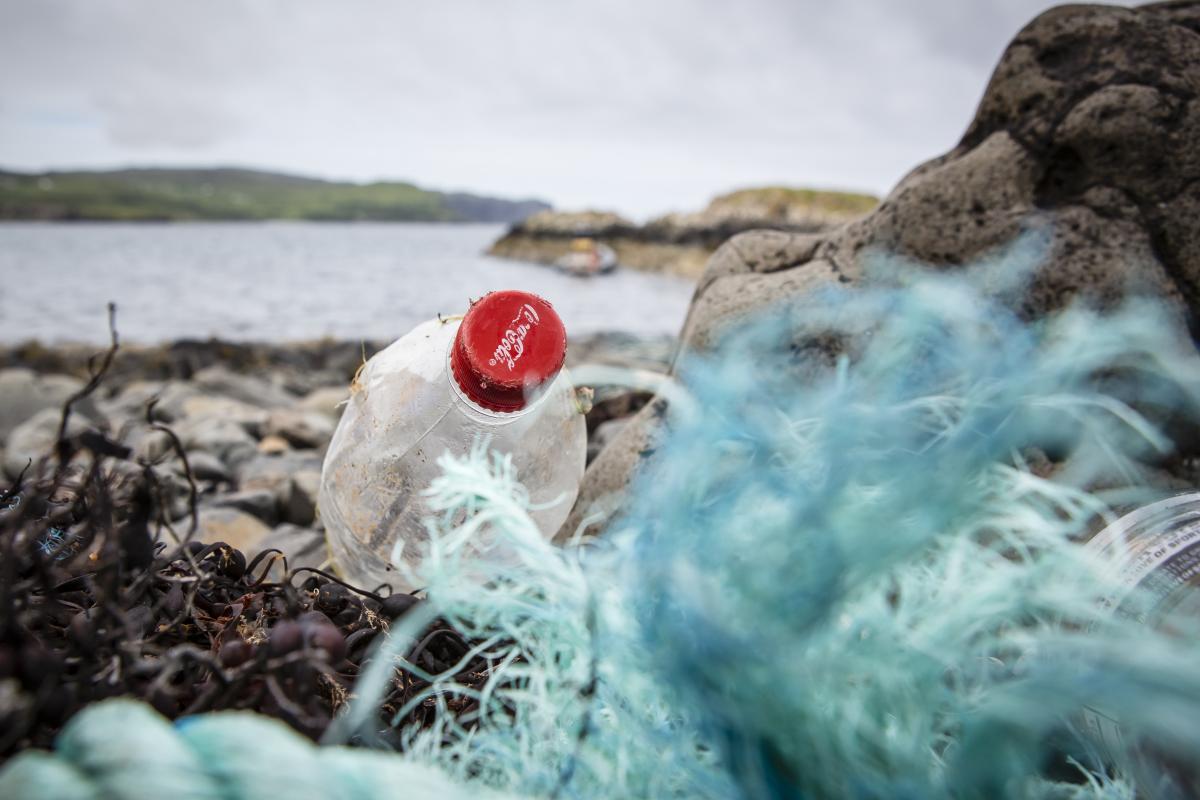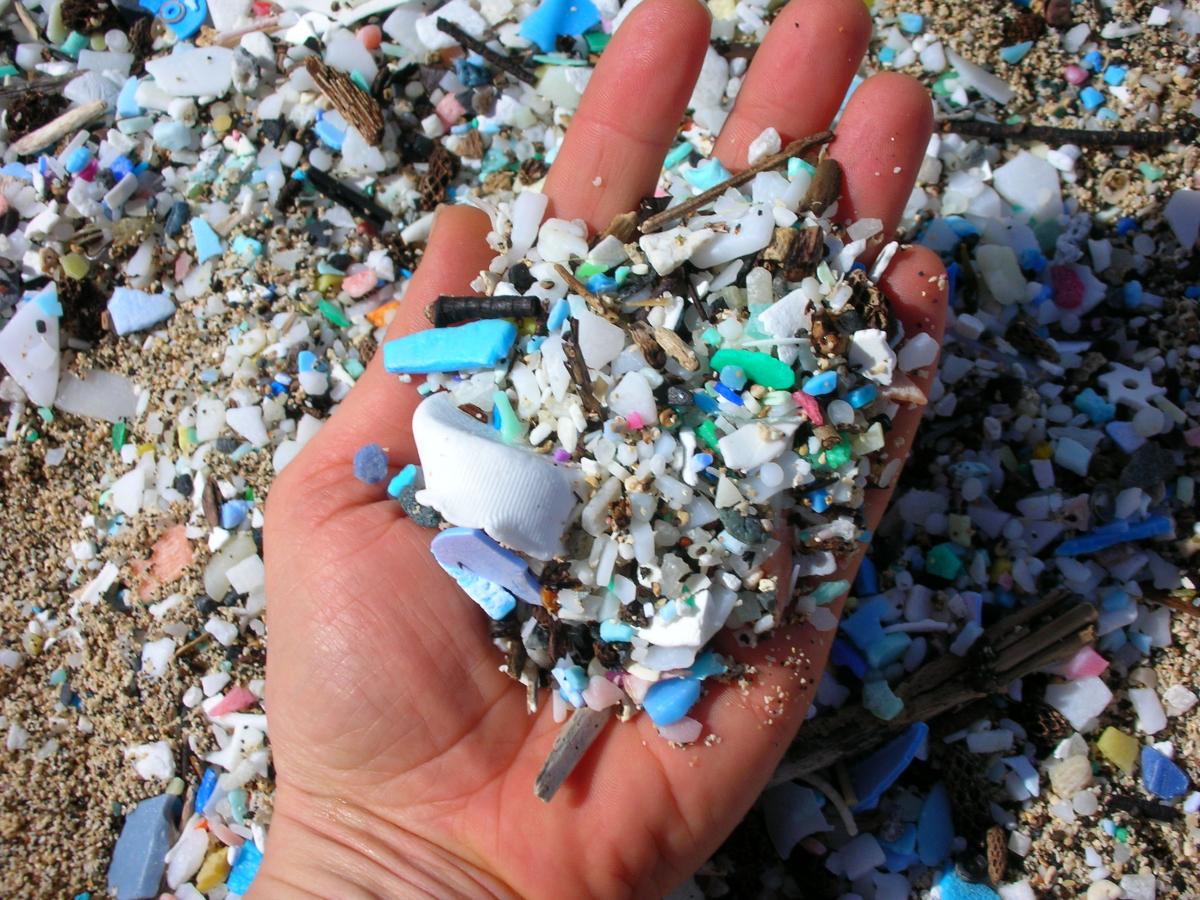Shocking images of marine life choking on plastic waste are finally moving companies to innovate on more sustainable packaging solutions. But it will take more than new technologies to kick a decades-old global addiction to cheap single-use plastic
Plastics are indispensable to modern life, yet our careless discarding of them is choking our oceans and doing untold damage to marine life. And to ourselves. According to the Ellen McArthur Foundation, 8 million tonnes of plastic a year is dumped into our oceans, and by 2050 there will be more plastic than fish by weight. Once in the ocean, plastic absorbs toxins and breaks down into tiny pieces, which find our way into our own food chain.
An investigation by Orb Media found microplastic contamination in 83% of the samples collected from tap water around the world. The highest contamination rate of 94% was found in samples collected in the US, while in Europe it was 72%.
Coca-Cola is estimated to make 110bn single-use plastic bottles every year, more than half of which don’t get recycled
Only 20% of the 300 million tonnes a year of plastics produced is recycled. A recent report on the chemicals industry by CDP, Catalyst for Change, points out that plastics production is one of the industry’s highest greenhouse gas emitting processes, and more than a quarter of plastics production is used for packaging. If plastics are to have a future we will need to be able to recycle them back into valuable products time and again, and we will need to find new ways to make them.
The CDP report's authors ask whether the plastics industry is going to have a "diesel moment". Certainly, the shocking images of oceans awash with waste that will be floating around for hundreds of years are beginning to have an impact.
Earlier this month Andy Clarke, former boss of Asda, called on supermarkets to stop using plastic packaging altogether, and for the UK packaging industry and supermarkets to “work together to turn off the tap”.

Some brands are trying to engage consumers by putting recycled marine plastics into their packaging; they and others have pledged to expand their use of recycled materials, and make more, if not all, of their packaging recyclable.
Sky says it will ban all single-use plastics in its products, operations and supply chain by 2020. If followed through, such initiatives will cut both waste and the burgeoning carbon emissions from plastics production. The scale is immense: consider Coca-Cola, which is estimated to make 110 billion single-use plastic bottles every year – more than half of which don’t get recycled. Australian NGO Boomerang Alliance estimates that one-third of marine litter is drinks bottles.
Many promising technologies are emerging from start-ups, but development takes years and without investment it’s a struggle to get to scale. Without scale they can’t challenge the old order of petroleum-based plastics, which are now so cheap to make, thanks to rock-bottom oil prices.
Waste processors want to know there’s a guaranteed market for a recycling stream, and until enough material can be processed, that can’t be proven either.
While energy recovery avoids the use of fossil fuels it can only be done once, and it still releases CO2 into the atmosphere, and potentially toxins too
Plastics are too valuable to be sent to landfill. The manufacturers’ association Plastics Europe calculated that if all plastics waste were to be diverted from landfill by 2025, an extra 5 million tonnes of plastic would be available for recycling every year. Plastics that couldn’t yet be recycled would be used for energy recovery. It estimates that this route would provide energy for 30 million people, and would save 70 million barrels of oil used in industrial processes, such as cement making. It also suggests up to 300,000 jobs would be created.
Nine European countries have a landfill ban in place: recycling rates are a little higher there but more plastics waste gets burnt for energy than is recycled. While “energy recovery” avoids the use of fossil fuels it can only be done once, and it still releases CO2into the atmosphere, and potentially toxins too. In fact, a European Commission communication on energy to waste concluded that the practice is “inconsistent with more ambitious recycling targets”.
What will make the difference? Perhaps policy is needed: but which carrots and which sticks will be effective? Charging for single-use plastic bags made a difference almost overnight.

Last month the Scottish government pledged to introduce a deposit-return scheme for bottles and cans, and more recently Defra has set up a working group to examine how such a scheme could run in England.
“We could look at metrics other than weight,” suggests Carlos Palafox-Ludlow, one of the founders of Enval, which recycles plastic aluminium laminates. “We could better channel investment if we looked at the carbon locked up, and [the energy] .... it took to produce the item in the first place.”
Tom Szaky, co-founder of Terracycle, the New Jersey company that made its name tackling hard-to-recycle materials, suggests subsidies could help recyclers compete. However, consumers need to play their part both by recycling and “choosing products that try to make a difference,” Szaky says.
We may not be able to halt the warming of the oceans, but we could do something about plastics right now
The naturalist and filmmaker David Attenborough added his voice to the global call for urgent action earlier this month when he launched his second series of Blue Planet, which will feature distressing scenes of albatrosses spending weeks away from their chicks gathering food, and returning with nothing but bellies full of plastic.
“What we’re going to do about the 1.5C rise in the temperature of the ocean over the next 10 years, I don’t know,” he told one interviewer. “But we could actually do something about plastic right now.”
On the following pages, we look at the current state of innovation to tackle this issue and the societal, regulatory and market challenges to scaling up new technologies to improve plastics recycling and make plastics from renewable materials.
This is one of a series of articles on how brands are innovating to reduce the environmental impact of plastic packaging. See also:
Who's bending the curve on reusing plastic
P&G sends recycling message to consumers with ocean plastics bottles
Can we scale up the new green plastics?
CDP ocean plastics pollution marine life circular economy recycling Ellen McArthur Foundation deposit-return schemes Greenpeace Blue Planet

